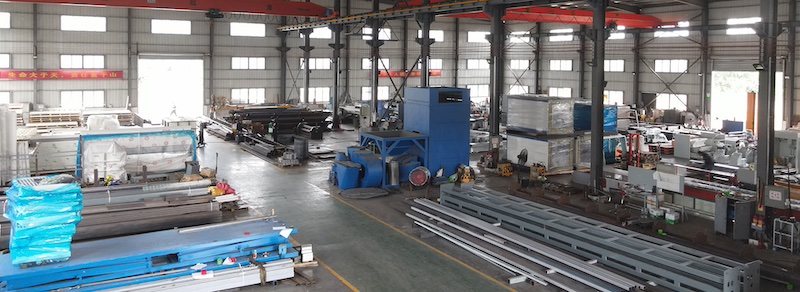I. Introduction
In recent years, the global manufacturing sector has witnessed significant transformation, and surface finishing technologies have been at the center of this evolution. Powder coating, in particular, has emerged as one of the most effective, sustainable, and cost-efficient finishing methods across industries ranging from automotive and construction to furniture and home appliances.
Compared to traditional liquid painting methods, powder coating offers substantial advantages such as higher durability, eco-friendliness, reduced waste, and improved energy efficiency. These benefits are reshaping the competitive landscape of global manufacturing and driving a surge in demand for modern powder coating lines and equipment.
This article explores the global powder coating industry trends in 2025, highlighting market developments, technological innovations, sustainability drivers, competitive dynamics, industry applications, and future opportunities for growth.
II. Global Market Overview
The global powder coating industry has continued to expand, driven by rising demand for durable, aesthetically appealing, and environmentally responsible surface finishing solutions.
Market Size and Growth:
By the end of 2024, the global powder coatings market was valued at approximately USD 15.5 billion and is projected to reach USD 22 billion by 2030, growing at a CAGR of 6–7%.Key Application Industries:
* Automotive – corrosion protection, high aesthetic finish, and eco-friendly solutions.
* Appliances – refrigerators, washing machines, and kitchen equipment requiring both durability and style.
* Construction and Architecture – aluminum profiles, windows, doors, and curtain walls.
* Furniture and Home Goods – stylish finishes with long-lasting protection.
* General Industrial and Hardware – machinery, tools, and structural components.
Regional Market Distribution:
Asia-Pacific (China, India, Southeast Asia): The largest and fastest-growing market, thanks to massive manufacturing bases.
Europe: Strong growth driven by strict environmental regulations (REACH, VOC standards).
North America: High adoption in automotive and architectural industries, with strong demand for energy-efficient coating lines.
Middle East & Africa: Emerging demand for construction and infrastructure projects.
The combination of industrial growth, regulatory pressure, and sustainability goals ensures powder coating’s continued dominance in the global finishing industry.
III. Technological Innovation Trends
Technological progress is reshaping powder coating equipment and production lines. In 2025, the following innovation trends stand out:
Electrostatic Powder Coating and Intelligent Controls:
Modern systems now integrate advanced electrostatic guns, precise voltage control, and real-time monitoring, reducing material waste and ensuring uniform coating thickness.Rapid Color Change (RCC) Spray Booth Systems:
Designed for industries requiring frequent color changes (e.g., furniture, home appliances), RCC systems drastically reduce downtime and improve operational efficiency.Environmental Protection Equipment:
Exhaust gas treatment, VOC control systems, and powder recovery units are now standard. Manufacturers are investing heavily in zero-emission production lines to comply with global sustainability goals.PVDF Fluorocarbon Coating Lines:
With superior weather resistance, fluorocarbon coatings are widely used for curtain walls, panels, and architectural applications. Customized fluorocarbon coating lines enable high-performance finishes for demanding construction projects.Automation and Robotics:
Robotics-enabled spray arms, conveyorized systems, and AI-driven controls are reducing labor costs while improving precision and throughput.
Together, these innovations not only enhance efficiency but also strengthen the competitive advantage of manufacturers adopting next-generation powder coating lines.
IV. Sustainability and Environmental Drivers
Sustainability is no longer optional—it has become a core requirement of the industry.
Environmental Regulations:
Policies such as the EU’s REACH regulations, the U.S. Environmental Protection Agency (EPA) guidelines, and China’s environmental directives are pushing companies toward eco-friendly powder coating systems.Energy-Efficient Oven Design:
New curing ovens are optimized for lower energy consumption, reduced carbon footprint, and faster cycle times.Powder Recovery Systems:
Modern plants now adopt near-100% powder reuse, minimizing waste and lowering costs.Green Manufacturing:
End-users increasingly demand products with low VOC emissions and sustainable finishing processes. Manufacturers that can offer these solutions gain a significant market advantage.
V. Competitive Landscape
The global powder coating industry is highly competitive, featuring both international giants and regional players:
Global Leaders: AkzoNobel, PPG Industries, Axalta Coating Systems, Sherwin-Williams.
Asian Leaders: Nippon Paint, Kansai Paint, and several emerging Chinese manufacturers with growing international presence.
Chinese Exporters: China has rapidly become a strong exporter of powder coating lines, spray booths, and environmental protection equipment, offering competitive pricing combined with increasingly advanced technology.
The future competitive edge will be determined by technological innovation, environmental compliance, customization, and after-sales support.



